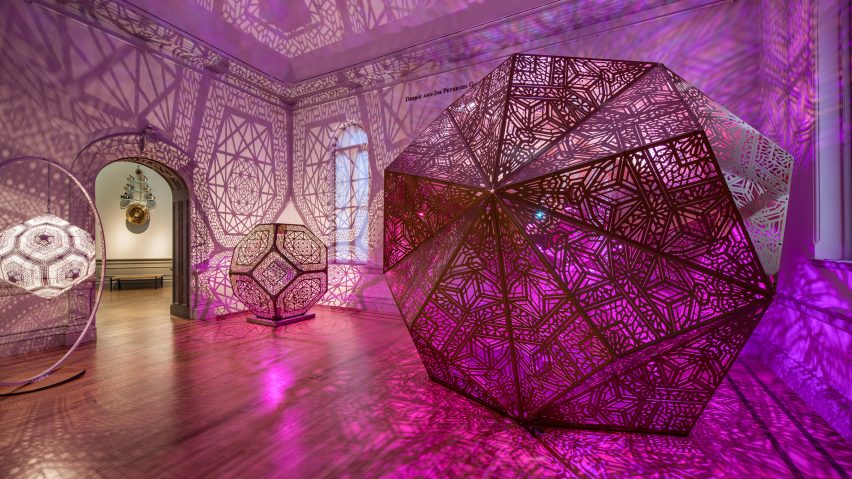
The Art of Burning Man is explored in Washington DC exhibition
The impressive temporary structures built during the annual Burning Man festival are the subject of an exhibition in the US capital.
No Spectators: The Art of Burning Man opened 30 March 2018 at the Renwick Gallery of the Smithsonian American Art Museum, in Washington DC.
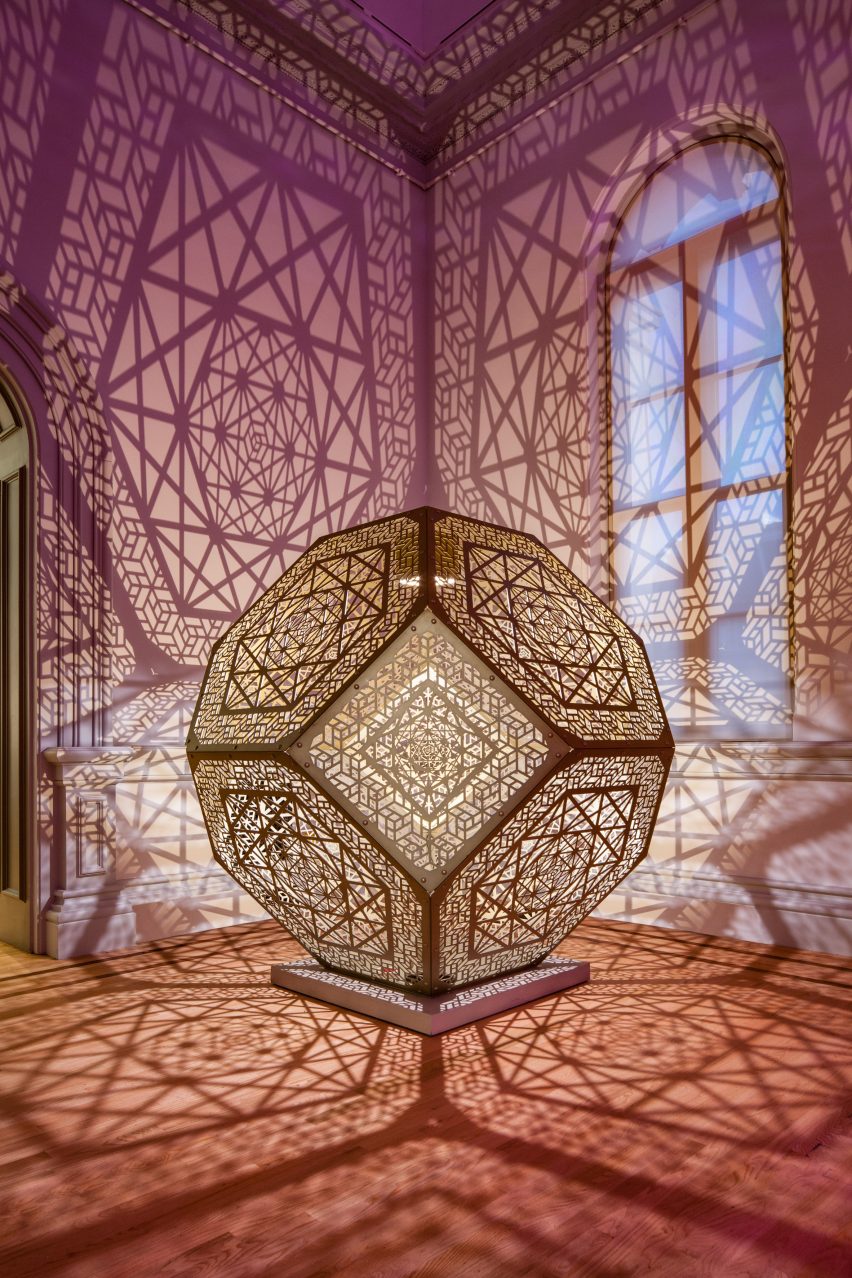
Taking over the entire building and expanding beyond its walls into the surrounding neighbourhood, the exhibition will highlight the creativity and craft of the community that travels to the Nevada desert for the event each year.
"The scale, the communal effort and the technical challenges inherent in creating works for the desert are part of what sets Burning Man apart from other art experiences," said Smithsonian American Art Museum director Stephanie Stebich.
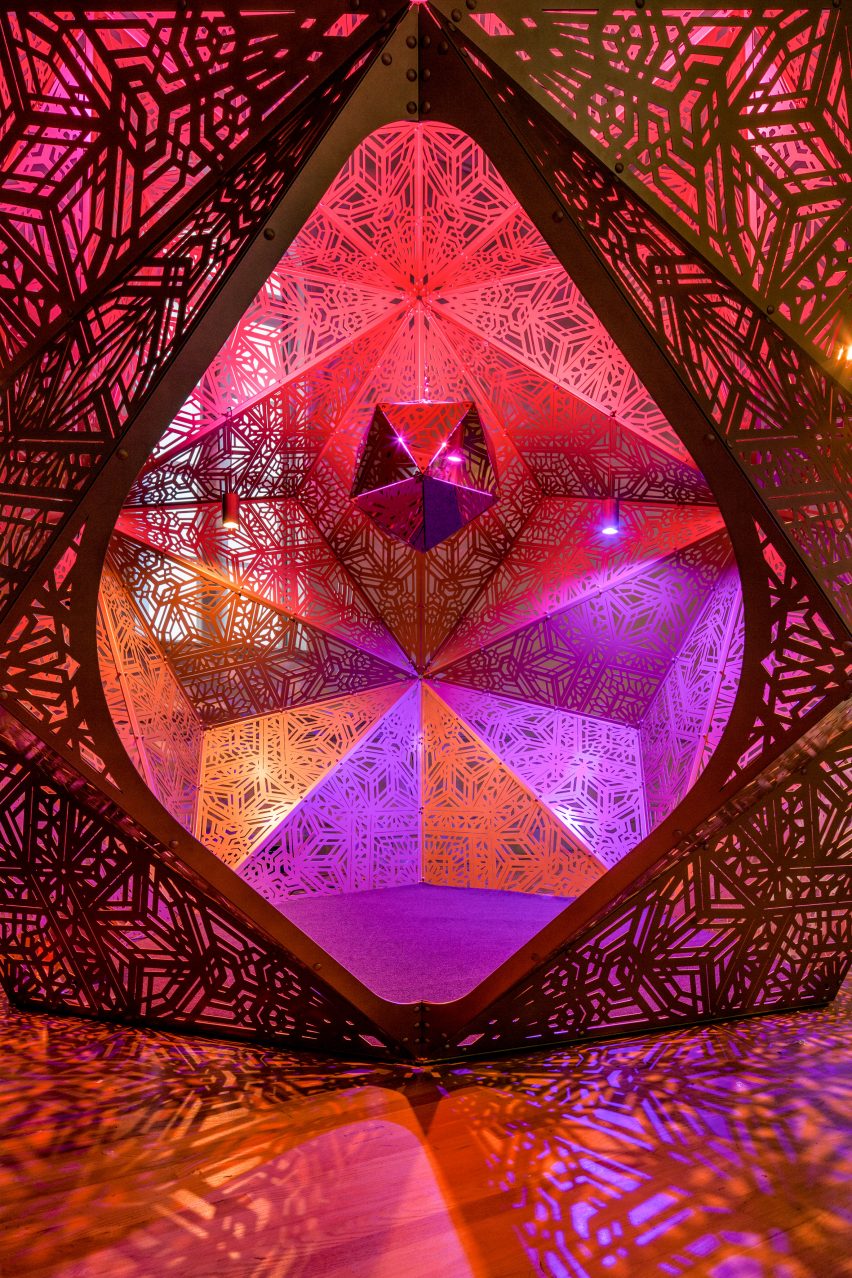
"It is an amazingly creative laboratory where innovators go to play and to push the boundaries of their craft."
Annually, Burning Man attendees construct projects ranging from small-scale artworks to colossal pavilions – some of which are ceremonially burned down at the end of the festival.

Several designs first built in the desert have been recreated inside the museum, including a giant female figure assuming a ballet-style stance.
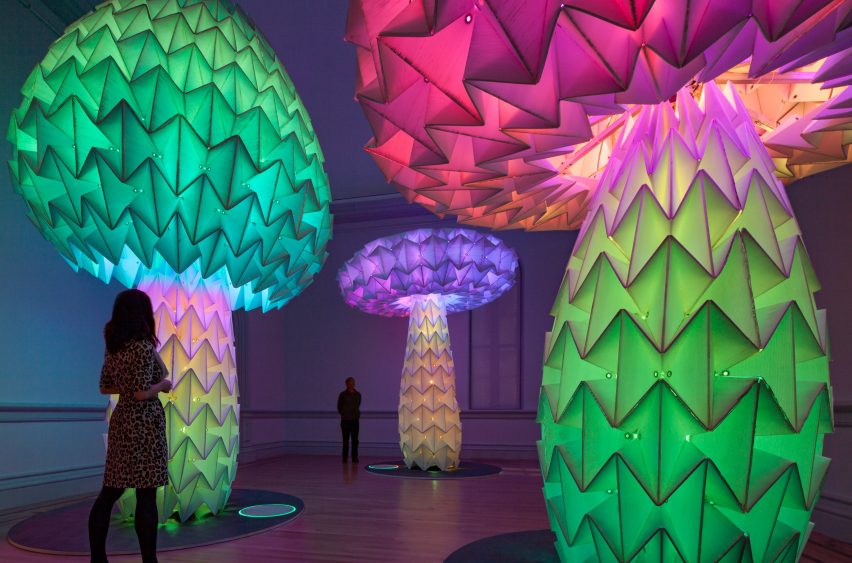
In one room is a set of huge mushroom-like forms, created from pleated surfaces and illuminated in a rainbow of colours, while polygonal spheres comprising perforated panels cast geometric shadows across another space.
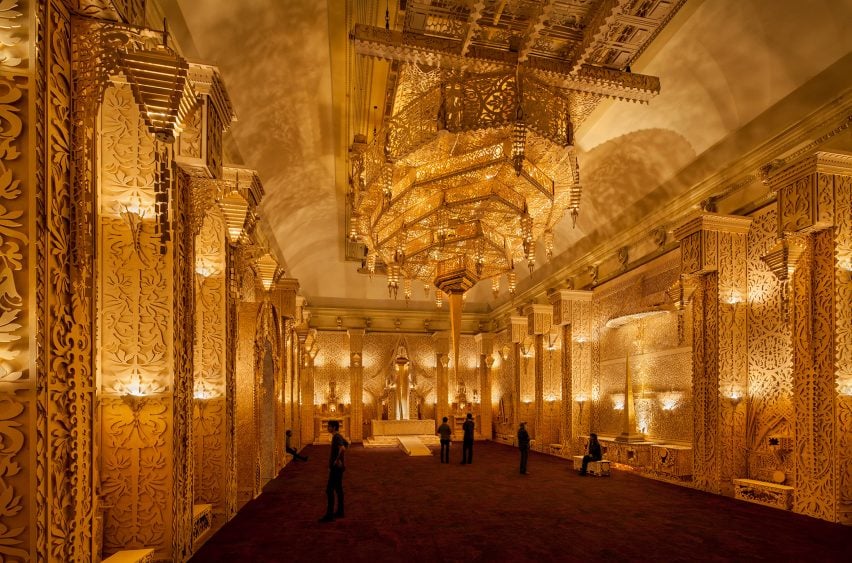
No Spectators also features original commissions that demonstrate other aspects of the event. Artist and frequent Burning Man participant David Best has installed his version of the Temple, built each year at the festival to a different design.
Complete with ornately carved walls, ceiling fixtures and an altar, the hall is atmospherically lit.
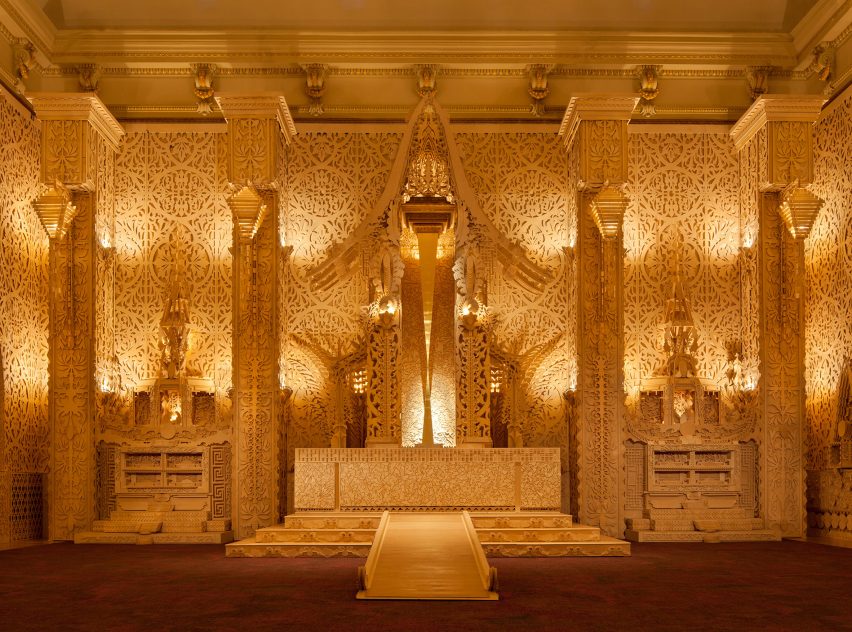
Also on show are some of the elaborate costumes and jewellery worn by Burners, along with videos and photography captured over the years.
"Through this ambitious exhibition, more people will have a chance to engage with Burning Man's ethos, which has given rise to a thriving year-round culture spurred by a growing global community of participants," said Burning Man Project CEO, Marian Goodell.
Burning Man was founded by Larry Harvey on a San Francisco beach in 1986, but now takes place in the Black Rock desert for a week during late summer each year, when 75,000 revellers set up camp and create what is known as Black Rock City.
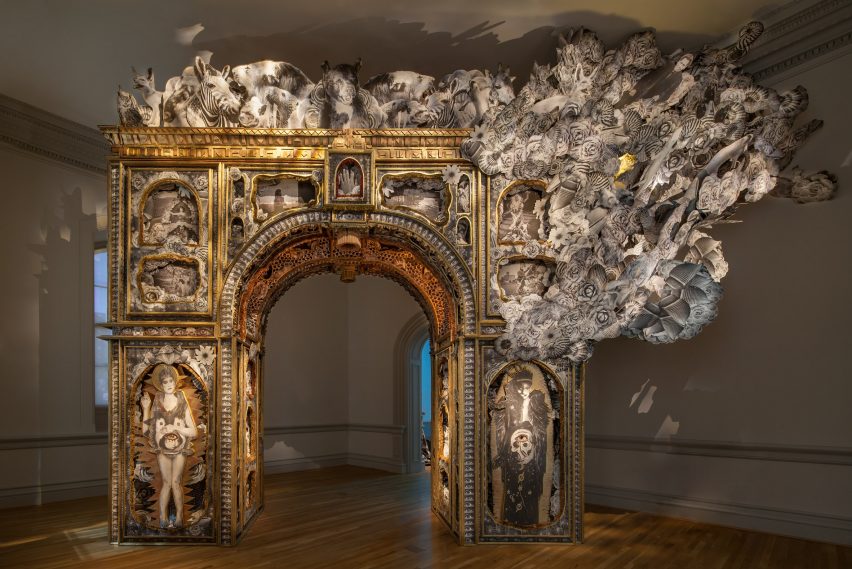
In a 2015 interview with Dezeen, Harvey spoke about the need for urban planning for an event of this scale. Photographers that have returned each year to document the festival and its artworks include NK Guy, and participants often share images of the best structures via Instagram.
Installations are the 2017 edition included an artificial tree that illuminated with "light flocks" in response to visitors' movements, heart beats and brain activity; and the temple – designed to highlight the problem of America's dying forests.
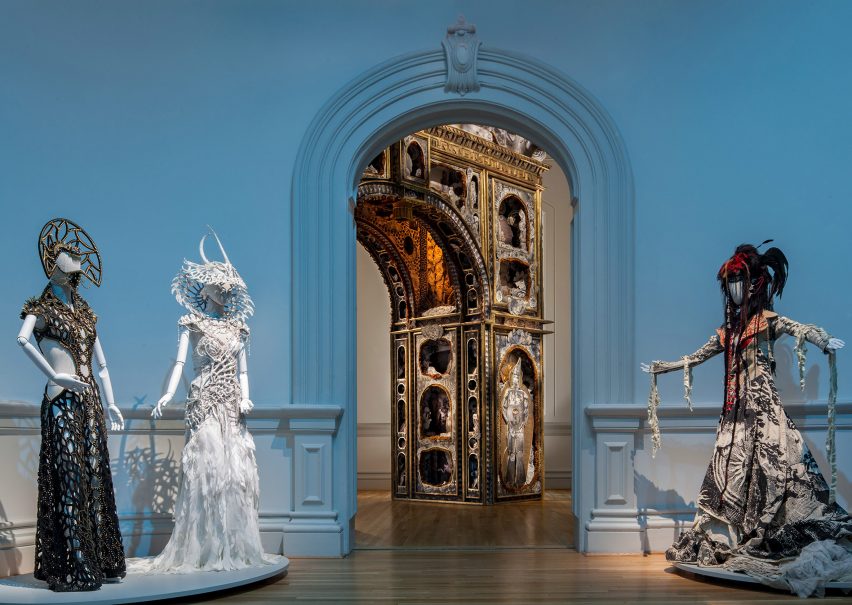
No Spectators is organised by Renwick Gallery curator of craft Nora Atkinson and the nonprofit Burning Man Project. The exhibition will close in two phases: the first-floor portion on 16 September 2018, then the second floor on 21 January 2019.
Accompanying artworks scattered across the surrounding neighbourhood in downtown DC will remain on show through December 2018. This year's Burning Man will take place 26 August to 3 September 2018.
Photography is by Ron Blunt.